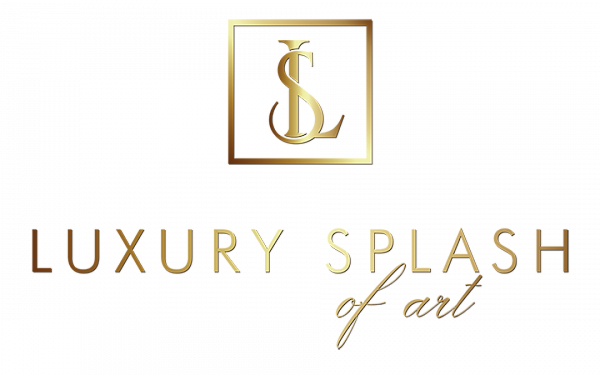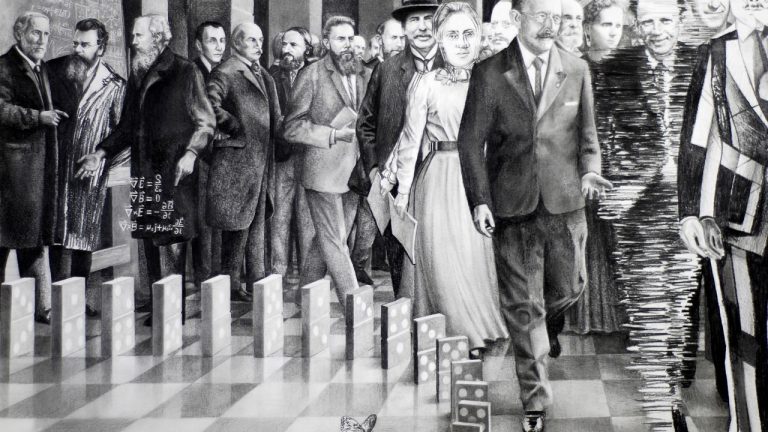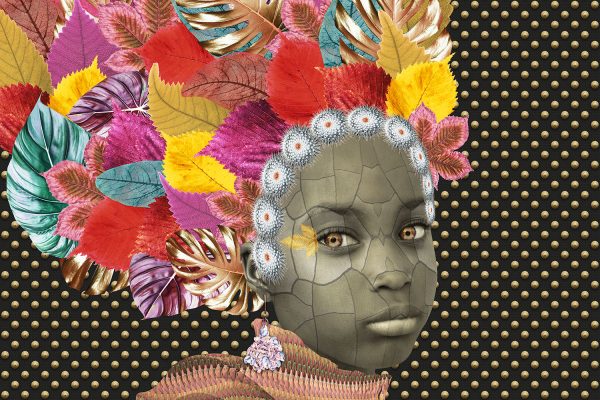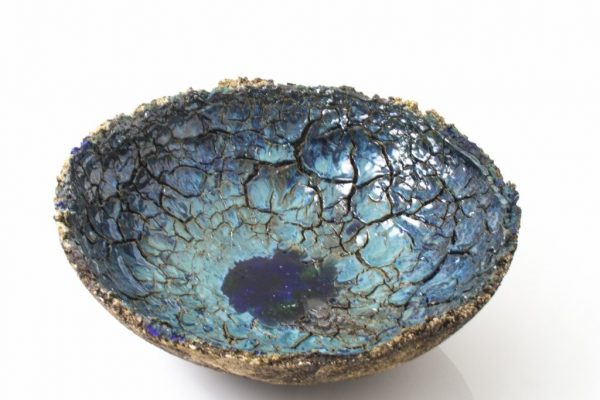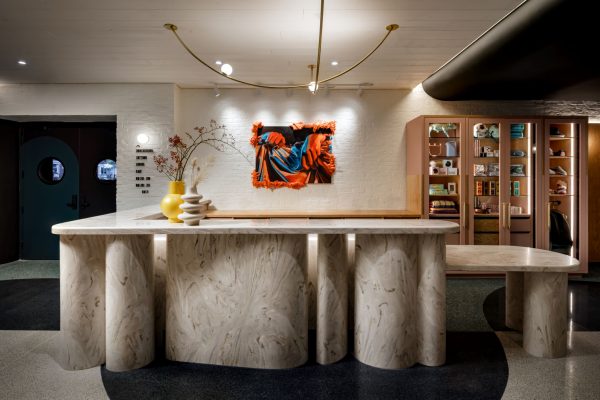Koloman Wagner – Visual artist, research assistant and doctorate at the Institute for Experimental and Applied Physics at the University of Regensburg. Founder and owner of a private drawing school.
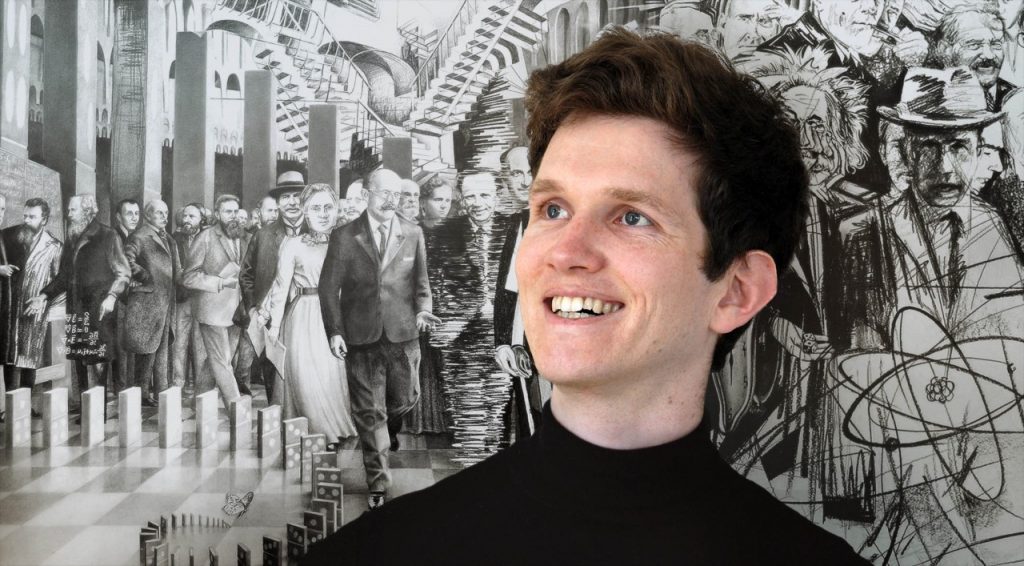
Luxury Splash of Art: Good morning Koloman, it is a great pleasure to meet you and thank you for sharing your story and incredible art with Luxury Splash of Art readers. Your work is very inspiring and I would like to talk about creation, your passion and projects you are involved in. But before we begin can you please tell our readers more about yourself.?
KW: Hello and thank you very much for inviting me to this special interview! It’s a great pleasure contributing to such a rich, versatile and ambitious magazine! My name is Koloman Wagner and I’m a young German visual artist and ongoing scientist. My everyday life is dominated by oscillating between my art studio and the laboratory. In the lab I learn about the fascinating principles of nature, in my studio I assimilate my impressions by means of drawing and painting. I live in two parallel universes. Both are so infinitely versatile and beautiful that I can’t decide on any of them. But this fuels me!
LSA: You were born in Austria, brought up in La Palma, Canary Island and moved with your family to Germany during your childhood. Your brother studies piano and your father created numerous artistic wood and metal objects. Were your parents your inspiration to start this artistic journey? Why drawing/painting and not music or sculpture?
KW: Yes, definitely! My mother is not only a great musician she also was my drawing teacher. But my parents never forced me to draw. First of all, they provided vast opportunities to stimulate my creativity. As a teenager I had the great chance to learn to play the accordion and to craft wood. In my father’s perception you can’t be a good artist without being cosmopolitan. I was also very fascinated about nature and its principles which finally led me to the decision to study physics. Nevertheless, my great passion is dedicated to drawing and painting. Although it was not clear in the beginning I never seriously considered becoming a musician or doing anything else. I always have had the feeling that drawing and painting are my passions! When you do your thing, you feel it.
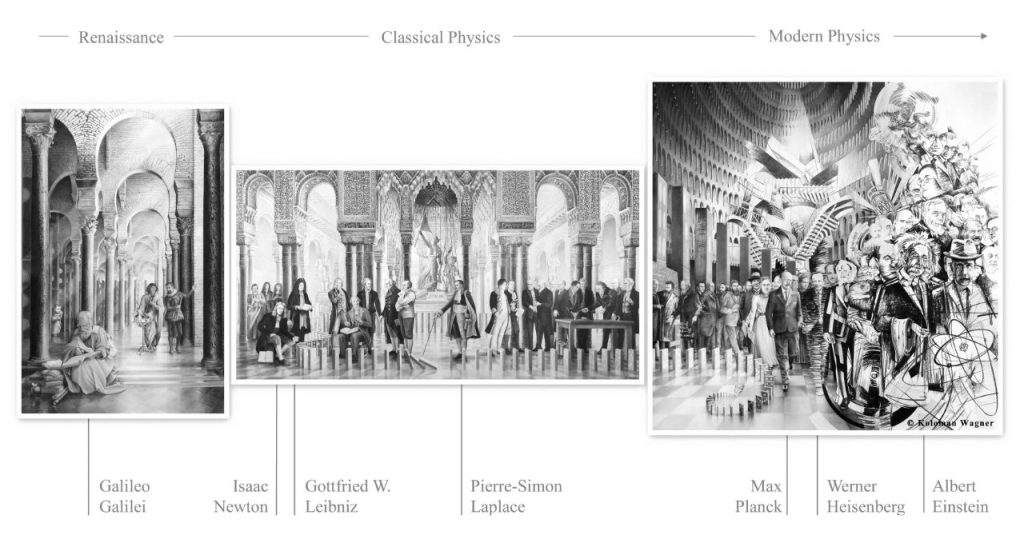
LSA: At a very young age you established a drawing school, I wish I spoke German as the website looks very interesting. Why was setting up this school important to you?
KW: Just after finishing school I started my own drawing school. In my first course only seven attendants, mostly friends, joined but after a year I could count almost 100 participants in total. It was a great success! I had no completed artistic education and I was also a little unsure at the beginning but it was the best decision of my life. I earned my first money with drawing and could immediately concentrate fully on my own art and started to make a name for myself. I organised my first solo exhibition and several hundred visitors joined the opening! By the end of the day I had sold half of all paintings. That was an incredible start and it was a very sustainable start. Soon after I met my first gallerist and got professional support right away. In the following years I also got the chance to teach art and drawing at public schools. Today, I still manage my drawing school. However, as I have started many other projects I have handed over most of the teaching to others. For all potentially interested German-speaking readers: have a look at www.zeichnen-kann-jeder.de!
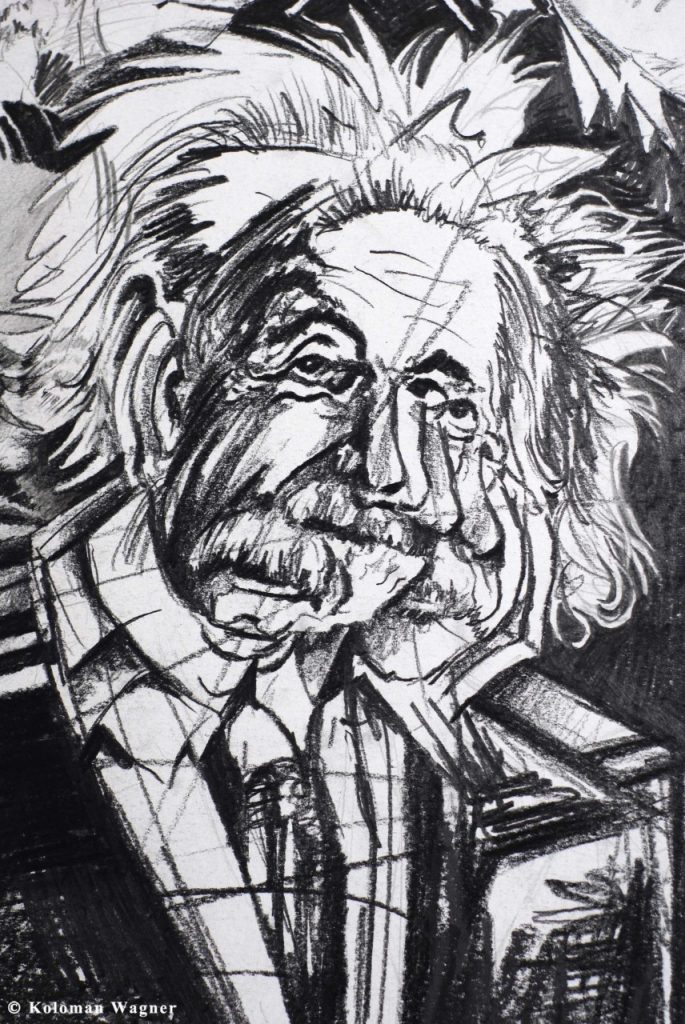
LSA : You use traditional oil, watercolour and graphite techniques, which one is your favourite one and why?
KW: At the moment, my favorite technique is drawing with graphite. For me it provides the most natural and versatile way of expression. Every pencil is made of graphite. Hence, graphite is available wherever and whenever you want. I can use graphite in any shade of grey. I can paint with graphite. Graphite is very aging resistant. And from the perspective of a physicist: graphite in its thinnest form, which is also called graphene, is the new wonder material in quantum physics!
LSA: You are very prolific artist with a lot of ideas and projects you paint, draw, write … Where is the inspiration coming from?
KW: The deeper reason probably lies in the fact that art provides a language which is complementary to our spoken language. I have learned to use this complementary language. When I draw a picture, I speak. Just like when I speak, I learn to understand and internalize when I draw. For me, drawing is comprehending. I have learned to appreciate the active process of creation because it puts the subjective before the objective. Very different from our purposeful everyday communication, where a generalized objective language is indispensable, art is more about the subjective. Once you have learned to appreciate that, you can’t stop being an artist anymore. Of course, inspiration is an adiabatic process. Following my initial inspiration for drawing and art I got inspired more and more over time. Practically, the inspiration for a distinct theme results from my experiences. That is, for example, my everyday (scientific) life, but also politics, society and environment.
LSA: Is there a dream project you would like to be part of?
KW: In my utopia art can provide the key for sense and meaning. My vision is to create art that unites my emotional world, my everyday life and the achievements of science and technology into a meaningful entirety. So to say, my dream project is to create art which really touches and changes people for the good!
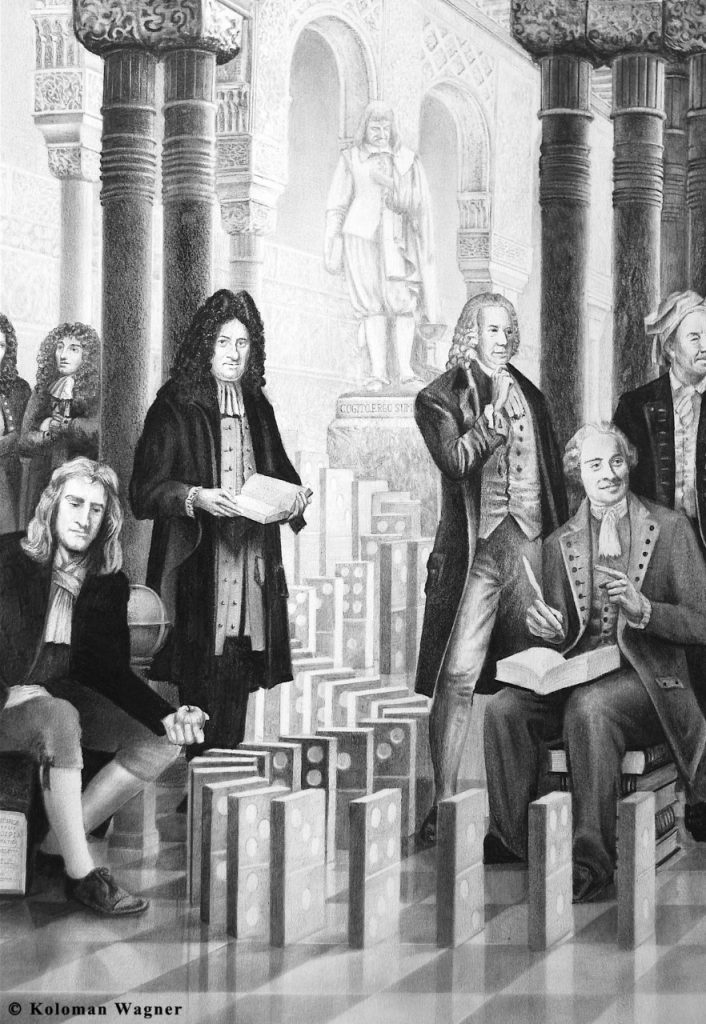
LSA: Art or science – you are very much involved in both and your latest work is a great example. Triptych called “The Physicists – A History of Truth“ (piece of art that the world will see for the first time in Luxury Splash of Art Magazine) is a very detailed, thought provoking piece of art including more than 70 portraits of famous scientists. You combine art and the scientific world to tell a story. What message do you want to convey? Please tell us more about this project, what is the story behind it, what was the creation process and how long did it take you to complete this inspiring pieces of art.
KW: In “The Physicists – A History of Truth“ I illustrate the evolving world view of the greatest thinkers in physics. In an about 4 meter broad graphite triptych and plenty other drawings I present the efforts of these pioneers, their serious work, passion and search for knowledge as a story of liberation from religion and truth. It is a chronological portrait of the scientists who developed and shaped the fundamental ideas of physics. The work is about contradictions, change of paradigms and the impact on history. In this detailed and multifaceted work, the viewer is invited to reflect on the meaning and purpose of science in our time. I started this project in 2016 and completed more or less in autumn 2020. Hence the creation took roughly four years.
LSA: What can we see in the triptych? Could you explain the scenery and individual characters in more detail?
KW: The triptych portrays the scientists who developed the fundamental ideas of physics. Connected by interwoven rows of dominos, the composition is divided into Renaissance, Classical Physics and Modern Physics. The first scene in the first picture starts with the conflict between church and science. In the foreground, Galileo Galilei is sitting towards his experiments. His books, a sphere with a feather, a telescope and a sketch plan with one of his experiments is attributed to him. On the left side of the picture a small monk with a bible is lurking between gigantic dominoes. His face is a portrait of the German dramatist Bertold Brecht, a link to his famous stage play “Galileo Galilei“ from 1939.

LSA: What does this scene stand for?
KW: The scene stands for the initial dispute between church and science, how to deal with scientific achievements and the corresponding handling of power and responsibility. This first scene is now connected to further scenes. If one follows the row of dominoes at the little Monk to the back and further to the right to the second picture, one comes to the next central scene. In an ornamental arched vault (reminiscent of the Court of the Lions of the Alhambra in Granada), the mathematician and physicist Pierre-Simon Laplace, surrounded by other famous scientists, sets falling the dominoes and thus attacks the little monk in the first picture.
LSA: In the background you can see “Marianne” from Eugene Delacroix’s famous painting “Liberty Leads the People” as a marionette chained to a sky of numbers. Why is she chained?
KW: Laplace lived during the French Revolution, a time when political liberation dominated Europe. However, back then freedom had no place in theoretical physics. Intellectuals such as Isaac Newton, Gottfried Wilhelm Leibniz and Pierre-Simon Laplace assumed a strictly deterministic worldview. Because the entire universe consists of particles that move at certain positions with certain momenta according to certain laws, in principle the entire past and future of the universe can be calculated and is thus completely fixed. In this worldview there is no coincidence, no God and no freedom. Everything runs according to the strict mathematical laws of nature.
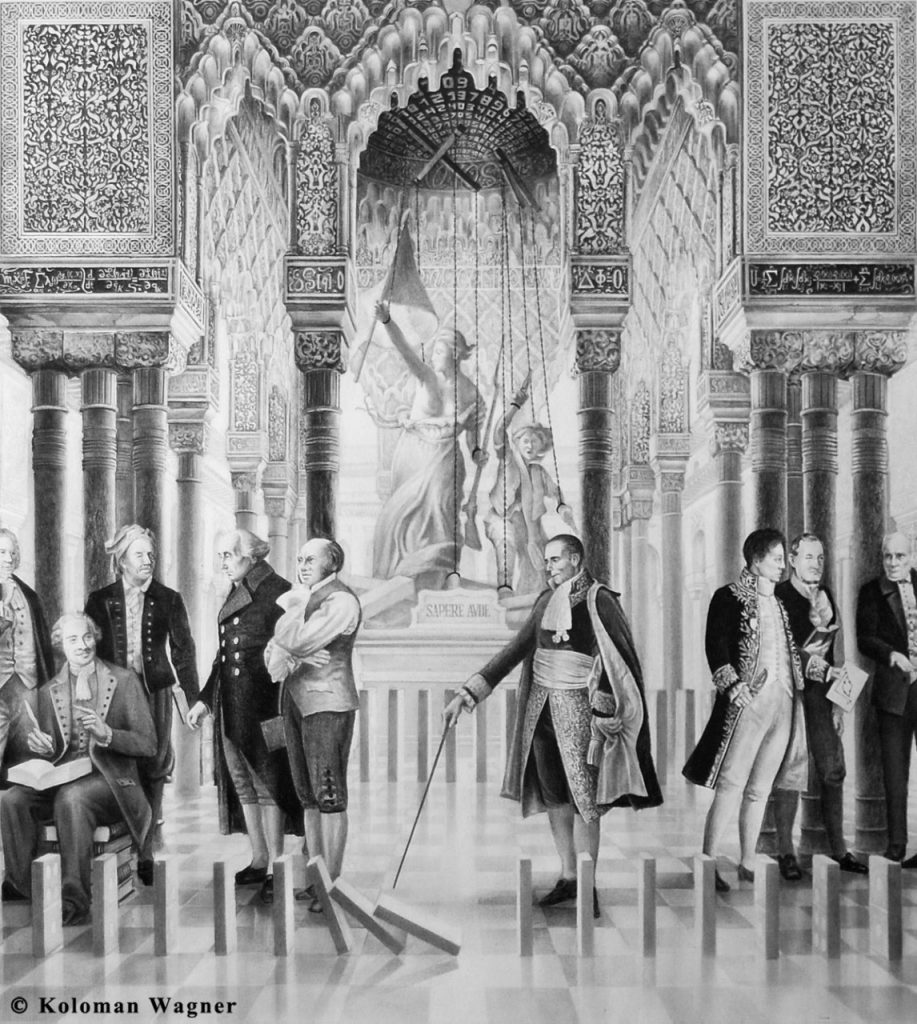
LSA: A real dystopia! Following the row of dominoes to the right, you come to the third picture. The story continues… What comes next?
KW: In the third picture more and more scientists appear, running towards the viewer and seeming to rear up and dissolve to the right edge of the drawing. On the left-hand side, one can see the last representatives of the deterministic school around Ludwig Boltzmann and James Clerk Maxwell; in the centre, the founders of quantum theory around Max Planck and Werner Heisenberg; further to the right, the founder of the theory of relativity, Albert Einstein. Many other physicists contribute to the spirit of that time. The background is formed by an imposing arched vault. In the centre there is a four-dimensional staircase, a variation of M. C. Escher’s lithography “Relativity“. On the left side, between the crowd and the staircase, huge dominoes tower up, threatening to knock down the building in the second picture. In the foreground, the row of dominos that continues from the second picture is pushed by a butterfly. At the top right, the composition ends with a large clocklike hamster wheel, in which a man seems to run out of the picture.
LSA: There is another row of dominoes in the background of the second picture. Is it also connected to the third picture?
KW: Yes, it runs back in time to the second picture. This rather hidden row of dominoes could still interrupt the row of dominoes which is set falling by Pierre-Simon Laplace in the second picture. It could save the monk…
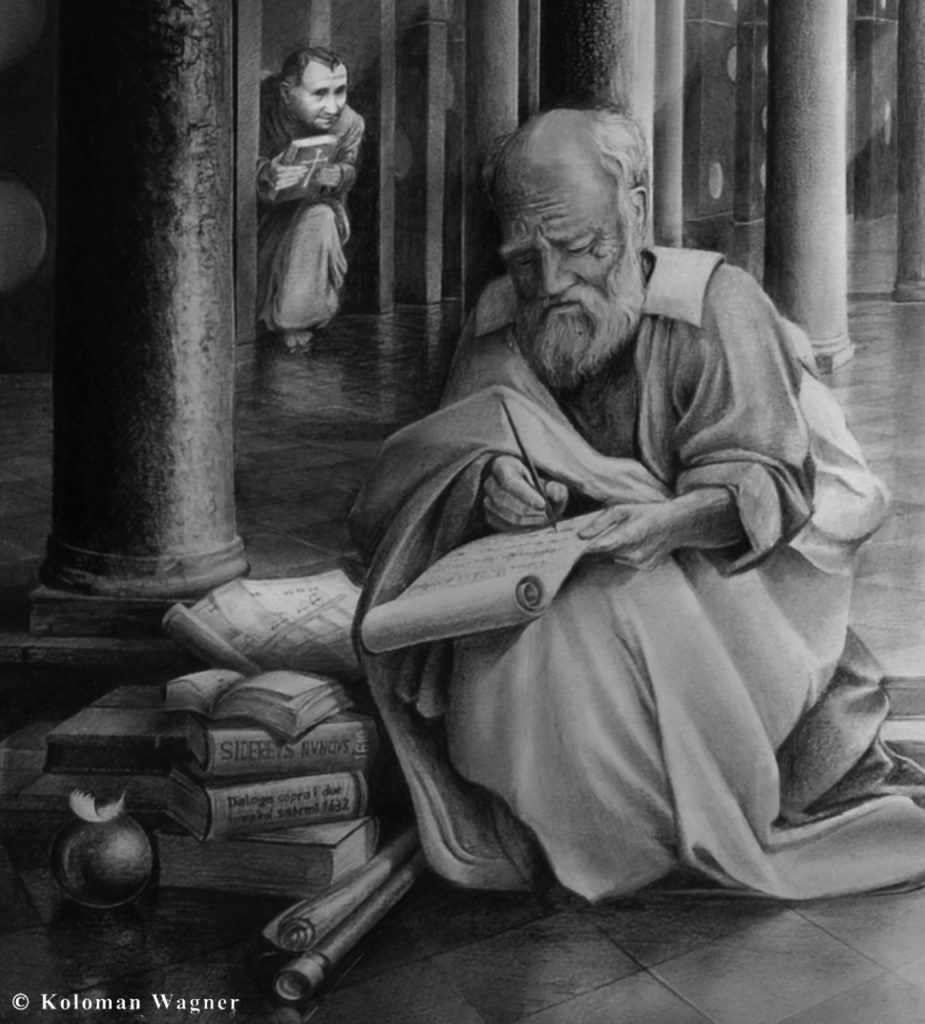
LSA: An optimistic turn! Who could trigger this row of dominoes?
KW: This is linked to the revolution of Modern Physics. The principle of uncertainty, the theory of relativity and achievements in modern logic revealed that the mathematical description of the world is limited. Laplace’s conclusions are no longer valid today. But the question remains: how to deal with scientific achievements and their theories. To which degree can we use scientific descriptions and what do we do if these descriptions fail? If we agree that theories are tools for developing technology and that these tools are arbitrary, what meaning do we give theories and resulting worldviews? This is the starting point for a contemporary discussion about meaning, purpose and responsibility of natural science in our society.
LSA: So far you exhibited a lot in German speaking countries, would you like to expand to other countries?
KW: I would like to present my new project “The Physicists – A History of Truth“ consisting of the triptych and plenty additional drawings and texts in Germany, Europe and also around the world. I’m convinced that the theme is highly topic and contributes to the recent debate about fake news, conspiracy theories and self-determination. However, due to the pandemic the premiere is still pending. Everything is postponed and at the moment I am still looking for further exhibition opportunities, sponsors and potential partners.
LSA: What advice would you give to beginning artist?
KW: It sounds old-fashioned but I mean it literally: Find your own way! You don’t need too much advices, instructions or role models. Try to do what suits you and avoid being the way you have to be if it doesn’t suit you. This is the easiest way to make yourself incomparable.
LSA: Thank you so much for your time, it was truly amazing to meet such an inspiring young artist. All the best for the future and please keep us posted about upcoming exhibitions.
KW: Thank you very much. It is a great pleasure to be here!
facebook: https://www.facebook.com/art.koloman
https://www.instagram.com/art.koloman
If you are interested in getting in touch with the management of Koloman Wagner please email: aldoevents@gmx.de
